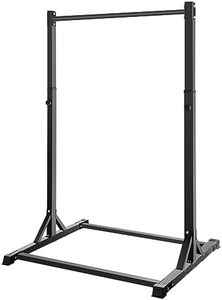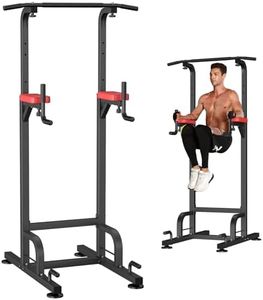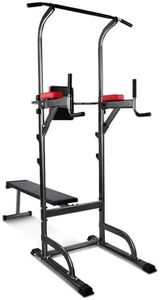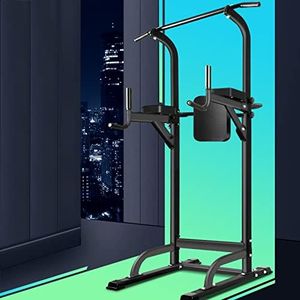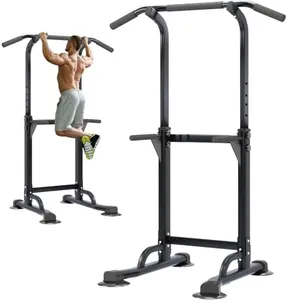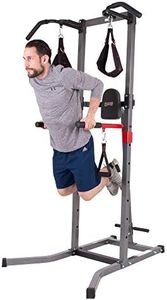We Use CookiesWe use cookies to enhance the security, performance,
functionality and for analytical and promotional activities. By continuing to browse this site you
are agreeing to our privacy policy
10 Best Power Towers
From leading brands and best sellers available on the web.Buying Guide for the Best Power Towers
Choosing the right power tower is all about matching the equipment to your fitness goals, physical space, and comfort preferences. Power towers can give you a full-body workout and they’re excellent for exercises like pull-ups, dips, push-ups, and leg raises. When shopping for one, take your time to understand the features that matter and think about how, where, and how often you’ll use it. Focus on solid construction, safety, and adaptability to ensure your workouts are effective and comfortable.Stability and Weight CapacityStability measures how steady the tower feels during use, while weight capacity refers to the maximum user weight the tower can safely handle. These are important because an unstable power tower can feel unsafe or tip over during intense exercises, and exceeding the weight capacity can damage the equipment or cause injuries. Lighter towers are easier to move but may wobble, while heavier, sturdier ones offer more stability. If you’re larger or plan to use added weights, look for towers with a high capacity (often over 300 pounds). For lighter users or limited spaces, moderate capacities may be fine, but always aim for stability that makes you feel secure during your workouts.
Exercise StationsExercise stations refer to the different functions the tower offers, like pull-up bars, dip stations, push-up handles, and vertical knee raise pads. This is important because more stations allow greater workout variety, but may take up more space. Some towers offer only basic pull-up and dip bars, while others add padded supports, push-up handles, or extra bars for versatility. If you want a full-body routine or share the tower with others, look for more stations. If your focus is specific (like just dips and pull-ups), a simpler tower will suffice.
AdjustabilityAdjustability means how much you can alter the tower’s height, hand positions, or station angles. This is important to ensure proper fit and comfort, especially if multiple people will use the power tower. Some towers allow you to adjust the height of pull-up bars or the placement of armrests and handles, while others are fixed. Adjustable models are excellent if users vary in height or if you want more exercise variety, while fixed ones may be simpler and more stable. Choose a model with adjustments if you’re tall, short, or sharing the equipment; stick to fixed if you’re the sole, average-height user.
Footprint and Space RequirementsFootprint is the amount of floor space the tower takes up. It’s important because a tower that’s too large won’t fit in a small room, and a compact tower might compromise on stability or features. Towers range from compact designs that suit tight spaces to large, robust structures that require more room. Measure your available space and consider ceiling height, since some towers are tall. If you’re in an apartment or small room, look for compact, vertical designs. If you’ve got a dedicated home gym, a bigger tower might be better for stability and versatility.
Grip Comfort and PaddingGrip comfort refers to the quality and cushioning of the handles and bars. Good padding prevents blisters and hand fatigue, especially during long sessions. Basic towers may have hard or thinly-covered grips, while premium towers use thick, non-slip, sweat-resistant materials. Think about your workout style—if you exercise frequently, padded and textured grips are more comfortable and safer; if your sessions are short or infrequent, this may be less crucial. Always test or read reviews to be sure the grips won’t hurt your hands.
